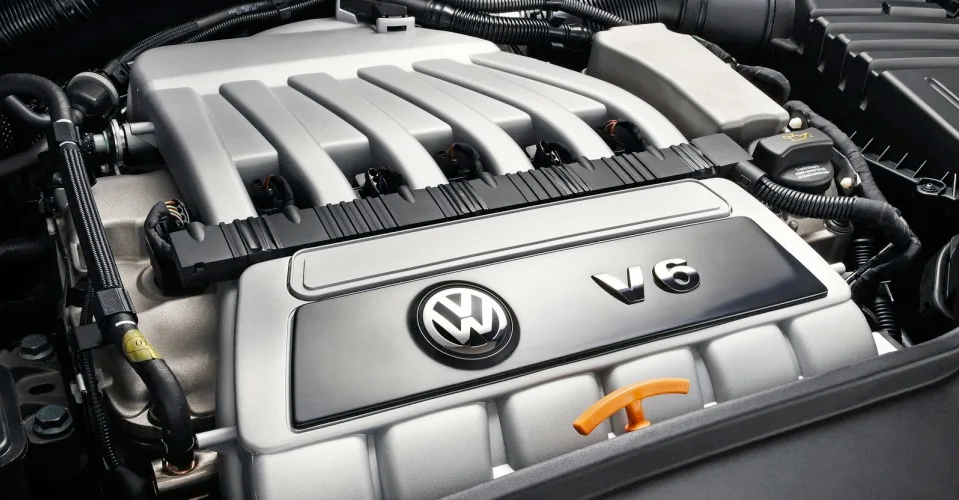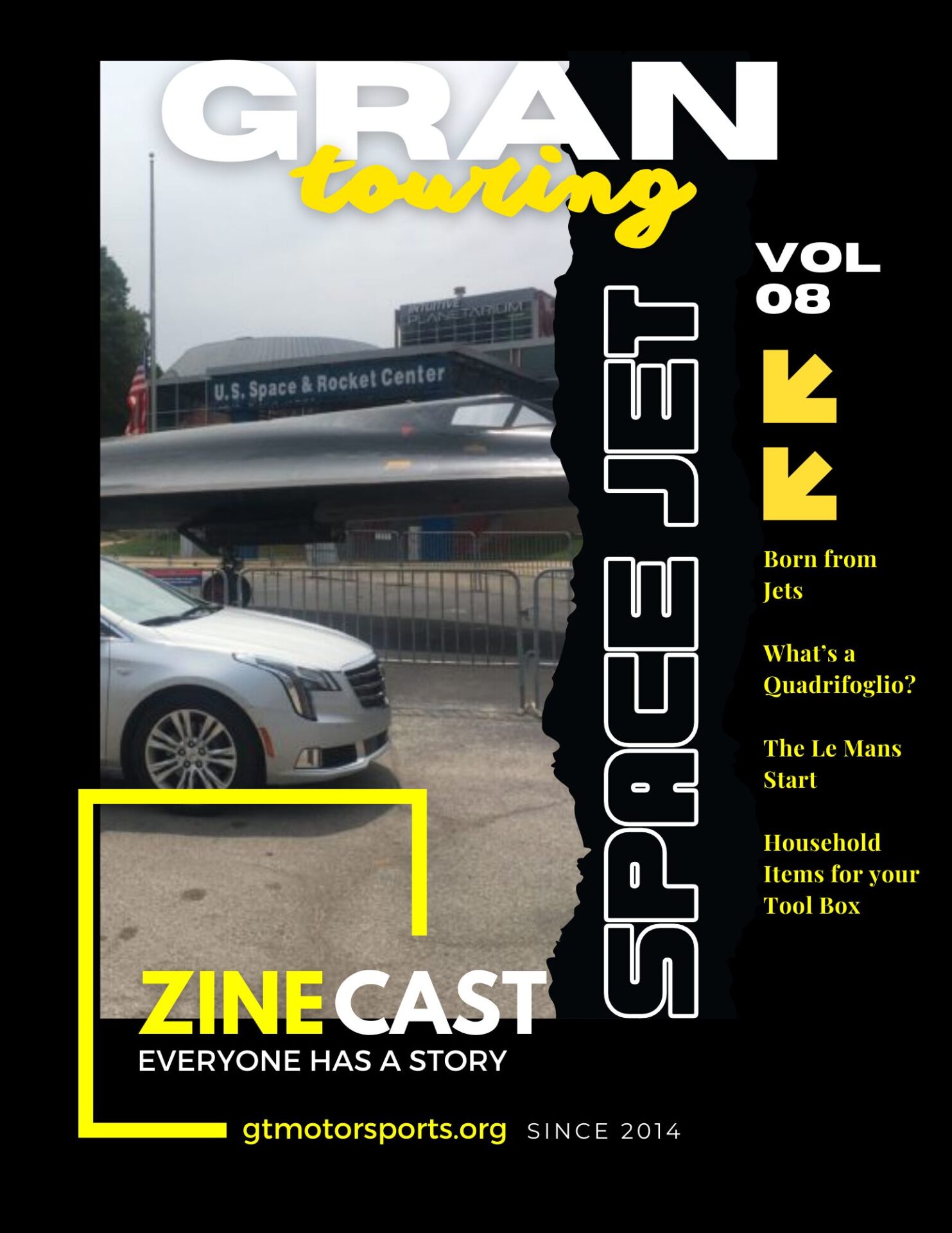There are certain engines that no matter how old they get will always sound good.
Flat-6 early 911s, Ferrari 12-cylinder, Mustang 5.0 V8s… but I can’t help but add the VW VR6 to that list. Don’t get me wrong, there are plenty of great sounding 6-cylinders out there from BMW, Alfa Romeo, Nissan, etc … but I won’t deny that every time I take my 24v VR6 to the track, someone runs up and says “man! that thing sounds AWESOME!!!” – and to prove that point, here’s a lap around Road Atlanta at full song for your acoustic pleasure.
…and the VR6 is unique among its 6-cylinder brethren

Six cylinder engines no matter the configuration (V or in-line) are silky smooth compared to other motors and this has a lot to do with the natural balance of a 6 cylinder engine. However, in most small cars, there isn’t enough room to fit a proper 6-cylinder because they tend to be either too long or too wide. In some cases they’re physically bigger than even some V8s and definitely larger than any 4-banger. And up until the 1990s it was deemed impossible to fit a 6-cylinder into a front-wheel-drive (FWD) vehicle. Space efficiency designs in a typical FWD require the engine + drivetrain to be mounted transversely while finding a way to include cooling, exhaust, steering and just about 70% of the vehicles mechanics in one tiny box in front of the driver to maximize “people space” in the cabin.
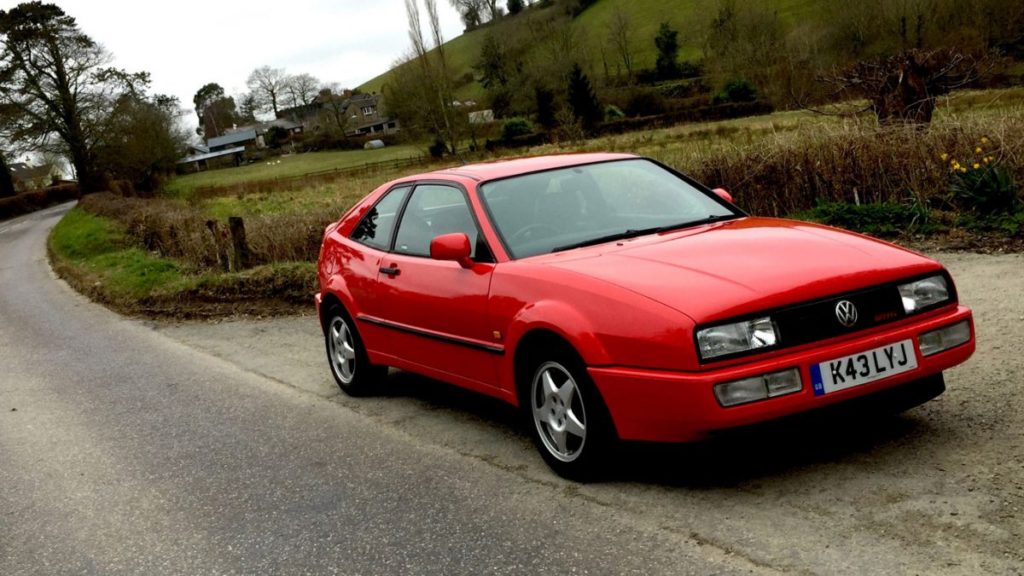
In 1991, a breakthrough was achieved by the folks over at Volkswagen.
Unlike traditional V6s with a 60° or 90° design, VW took a risk and developed a narrow-angle (15°) V6 displacing as much as 2.8 litres which were able to be arranged without cylinder overlapping because the adjacent cylinders are all widely spaced from each other. This engine design became known as the “VR” a combination of the V engine (German: V-Motor), and the German word “Reihenmotor” (meaning “inline engine” or “straight engine”) – literally translating to “Vee-Inline engine” (VR-Motor); how clever! The VR6 was introduced to the world in 1992 as part of the hottest of hot-hatches, the VW Corrado. And so the VR6 took the world by storm, with marketing claiming “a V6 that takes up the same space as a 4-cylinder” – and it did.
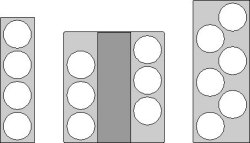
Seen above: A typical in-line 4-cylinder (left), a standard V6 (center) and the VR6 (right); note that the VR6, though longer than a V6 is only a “quarter size” longer than the 4, and less than double it’s width. Impressive and Compact! – Complications needed to be addressed before the engine could go into production by ’92: most importantly the valvetrain. In most engines valvetrain design is symmetrical; meaning intake air is separated from the exhaust air such that “cold air in, hot air out” – and in some cases exhaust air is split on exit (as seen in V-shaped engines) or banked (like in-line engines). VW had to develop an entirely new “asymmetrical” cylinder-head and valvetrain to accommodate the VR block, and in keeping with their new “cross-flow head” mantra as seen below.
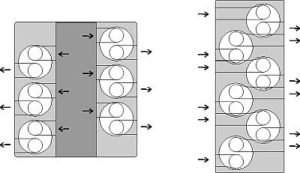
Like an in-line engine, intake air enters the VR from the front bank, and hot exhaust air exits rear bank. By pairing the valves and using unequal length runners that ran through the head it allowed VW to continue to save valuable space in the engine compartment. Since the VR was complex enough and the rest of the world was fascinated with “multi-vario-cam multi-valve” engines VW simplified things and stayed with a 2-valve per cylinder single-overhead cam (12 valve; SOHC) design. Since the VR shares many similarities with an inline-4, the result is that not only is it smaller, but also lighter than a typical V6 (which would have a larger block and 2 cylinder heads.). It would have also been cheaper to manufacture if not reinforced with a 7-bearing crankshaft.
It’s been a while, time for an upgrade!
The original VR6 was in production for 10 years and during that time VW engineers under Ferdinand Piech were determined to solve this “4 valves per cylinder” requirement for the VR and catch up to the market, and by 2003 – they did. By then the Corrado and other VR6 equipped VW models were gone, but the first VW model to get a 24v VR6 was the 2001 Beetle RSi which included a 400cc boost, taking the engine to 3.2-litres. #onlyineurope
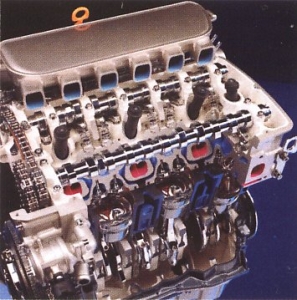
It took the VW engineering team 8 years to solve the problem, and here’s how they did it. Inspired by what Honda was developing with V-TEC, the engineers decided that instead of having 4 cams, which would have made the cylinder head physically bigger and more complex, they borrowed from past experience using a flat-6 Porsche design by adding overhead rocker arms to control the valves. Then they inverted and reoriented the cam and carefully positioned the cam lobes to operate the rockers from a center pivot point rather than acting as a lever. (seen below). Woah! #mindblown
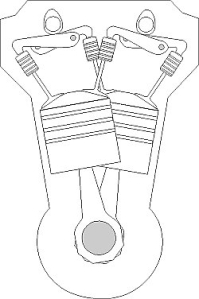
Reality is often stranger than fiction, so what you ended up with was 2 cams, merged into a single camshaft, but operating as “twin cams” because of the rocker arms.
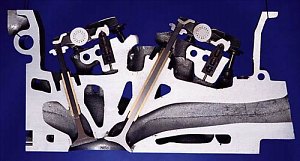
But let’s not forget that the VR6 cylinder is asymmetrical, so now that they solved the cam + valving design, they need to readdress the intake/exhaust flow design.
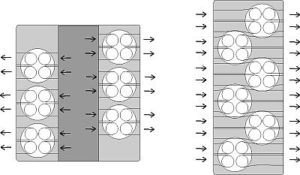
All of the valves in the 24v VR6 are oriented in such a way that their distances are accessible by either cam. So what’s really going on here is that, Cam 1 is controlling the intake valves of Bank A & B, and Cam 2 is controlling the exhaust valves of Bank A & B; which creates more of that “cross-flow” black magic we talked about earlier. But as you can see from the picture above, the runners are still oriented in the “cold front / hot rear” configuration despite doubling the number of valves. VW was able to further modify the 24v VR6 by adding variable valve timing on the intake side only. So in this case, you could say: 2×2 = 2. #newmath. There were also rumors brewing that further development would bring about full VVT or in BMW-terms “double vanos!” – but the VR development was stalled before that could happen.
Overall the VR6 is a remarkable invention. Complex and Compact, the VR revolutionized the way we looked at FWD vehicles. By comparison the 12-valve is torquey and peaks out on power early and has a deep unmistakable note, whereas the 24-valve is high-strung, revvy and very-very angry sounding. The 2.8-litre 24v was produced until 2005-ish, while the 3.2-litre carried on in the Golf R32, Audi TT as well as the Touareg models until about the 2010-ish timeframe. The VR6 saw one final redesign for the Passat CC circa 2008 when it was bumped up to an astonishing 3.6-litres developing numbers just shy of 300 hp. #sleeper.
But VW, in their infinite wisdom … couldn’t leave well enough alone.
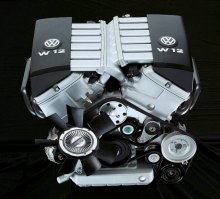
Imagine a 12-cylinder than fits in the space of an 8… You’re crazy! – The first “W” motor from VAG was in the 1991 concept car the “Audi Avus“ (below) although scrapped due to complexity, the engine configuration was basically 3 banks of cylinders arranged as a W sharing one crank think: \|/ – makes total sense, right? #howhardcanitbe.
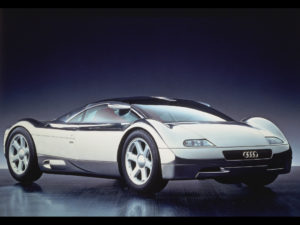
Well, that is not the W we have come to appreciate in the Bugatti Veyron, Audi A8, Bentley Continental and others. Look at the shape of the letter “W” – do you notice anything? – In English we say “Double -U” which is a terrible bastardization of the french word “doubler-vay” which literally means “Double-V”. Starting with the VW Nardo concept, VAG introduced a new engine whereby they mated two 24v 2.8-litre VR engines on a single crank at 72° thereby creating a proper 5.6-litre W (or double V-motor). #newmath.
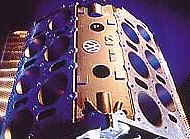
Understanding that the W could not have been invented without the VR design, you probably have a good understanding of how the W engine works without too much additional man-splaining from me. But just know that even today, while the VR is no longer being developed, the W is being further refined – Quad-turbos and all. Despite developing VR5s, VR8s, W16s, W8s and the like, VAG seem content with their 1.4, 1.8 and 2.0-turbo 4-cylinders and the return of the 5-cylinder in their FWD-based offerings for now. The larger vehicles with more available space and longitudinal configurations are using standard V6 and V8 configurations which have been developed in-house at Audi for decades. Maybe one day we will see the return of the VR with technology carried over from the never W engines. But until then, I will continue to tear up the asphalt and bring joy to those that appreciate the unique sound that my strange little narrow-angle V6 has to offer!
If you want to dive deeper and learn more about the VR and W engines, below are some extra sources of reading material for you to enjoy:
- http://autozine.kyul.net/technical_school/tech_engine_packaging.htm (2003 version)**
- http://www.autozine.org/technical_school/engine/VW_VR6_W.html (2017 version)
- https://en.wikipedia.org/wiki/VR6_engine
- http://vr6parts.com/onlinestore/index.php/volkswagen/vr6/short-block.html
- http://www.zerotohundred.com/newfor…58168-650bhp-750nm-w12-in-a-golf-gti-mk5.html
**And I have to give the folks over at Autozine special credit and thanks for inspiring me to write this tech article.
#neverstoplearning


